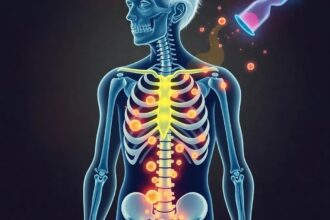Explore the groundbreaking science of exerkines, molecules released during exercise that enhance cardiovascular health, brain function, and immune response, and discover how to maximize their benefits.
Exerkines, molecules released during exercise, are transforming our understanding of how physical activity benefits health, from boosting brain function to enhancing immune response.
Introduction to Exerkines
Exerkines are a class of molecules released by various tissues in response to exercise. These molecules play a crucial role in mediating the health benefits of physical activity. According to a study published in Nature Reviews Endocrinology
, exerkines include cytokines, peptides, and metabolites that influence multiple organ systems.
Dr. John Hawley, a leading researcher in exercise metabolism, stated in a press release from the American Physiological Society, Exerkines are the messengers that translate the mechanical stress of exercise into biochemical signals that improve health.
How Exerkines Work
When you exercise, your muscles, fat tissue, and even your brain release exerkines into the bloodstream. These molecules then travel to different parts of the body, where they exert their effects. For example, the exerkine irisin, released by muscle tissue, has been shown to improve glucose metabolism and reduce inflammation.
A 2020 study in Cell Metabolism
highlighted that irisin can also promote the browning of white fat, turning it into a more metabolically active form that burns calories more efficiently.
Exerkines and Cardiovascular Health
One of the most significant benefits of exerkines is their impact on cardiovascular health. Research published in Circulation Research
found that exerkines like FGF21 and IL-6 help reduce arterial stiffness and improve endothelial function, which are critical for maintaining healthy blood pressure and preventing heart disease.
Dr. Michael Joyner, a cardiovascular researcher at the Mayo Clinic, noted in an interview with Science Daily
, The cardiovascular benefits of exercise are largely mediated by these exerkines, which act as natural cardioprotective agents.
Exerkines and Brain Function
Exerkines also play a vital role in enhancing brain function. The exerkine BDNF (brain-derived neurotrophic factor) is particularly important for neuroplasticity, the brain’s ability to adapt and form new connections. A study in Journal of Neuroscience
demonstrated that regular exercise increases BDNF levels, which can improve memory and cognitive function.
Dr. Ratey, author of Spark: The Revolutionary New Science of Exercise and the Brain
, emphasized, BDNF is like fertilizer for the brain. It helps neurons grow, connect, and survive, which is why exercise is so beneficial for mental health.
Exerkines and Immune Response
Exercise-induced exerkines also modulate the immune system. Research in Frontiers in Immunology
showed that exerkines like IL-15 and IL-7 enhance the proliferation and activity of immune cells, making the body more resilient to infections.
Dr. David Nieman, a professor of exercise science at Appalachian State University, explained in a blog post, Exerkines help create a more robust immune surveillance system, which is why people who exercise regularly tend to have fewer colds and infections.
Maximizing the Benefits of Exerkines
To maximize the benefits of exerkines, it’s essential to engage in a variety of exercises. Strength training, cardio, and flexibility exercises each stimulate the release of different exerkines. For example, high-intensity interval training (HIIT) has been shown to significantly increase levels of irisin and BDNF.
A practical tip from the American College of Sports Medicine is to combine different types of exercise in your routine. Mixing strength training with aerobic exercise and flexibility work ensures a comprehensive release of exerkines,
they advised in a recent press release.
The Future of Exerkine Research
The field of exerkine research is still in its infancy, but the potential applications are vast. Scientists are exploring how exerkines could be used to develop new treatments for chronic diseases, enhance athletic performance, and even slow the aging process.
Dr. Jorge Ruas, a researcher at the Karolinska Institute, stated in a recent announcement, Understanding the molecular mechanisms of exerkines could lead to breakthroughs in personalized medicine, where exercise prescriptions are tailored to an individual’s genetic makeup.
Conclusion
Exerkines are revolutionizing our understanding of how exercise benefits health. From improving cardiovascular health and brain function to enhancing immune response, these molecules are key to unlocking the full potential of physical activity. As research continues, the future of exerkine science holds promise for new therapies and a deeper understanding of the intricate relationship between exercise and health.




